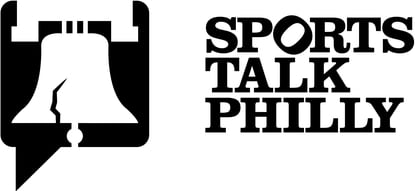Patrick Causey, on Twitter @InsdeTheHuddle
(Note: this is a two-part series on Bradford. Part Two can be read here)When Chip Kelly initially traded for Sam Bradford, he compared the oft-injured quarterback to a pair of future first ballot Hall of Famers: Peyton Manning and Drew Brees. Kelly's point was that the Eagles obtained a potential high ceiling quarterback only because he was coming off a major injury, much like the Denver Broncos and New Orleans Saints were able to obtain the aforementioned Manning and Brees.
Over time, fans and media members started to buy into this comparison. That buy-in reached an all-time high when Bradford looked unstoppable in the third preseason game against the Green Bay Packers.
But Bradford, despite his quick release and accuracy, simply is not on the level of these quarterbacks, as the majority of Eagles fans have come to realize over the last three weeks.
And while I understand why Kelly made this comparison — he was likely trying to build up Bradford's confidence, which was as shaky as his twice-surgically repaired knee — it had the unintended consequence of putting enormous (and unrealistic) expectations on Bradford to fulfill.
Outside of the second half against the Falcons, Bradford has struggled mightily. We chalked up his lackluster performance against the Falcons as a byproduct of rust; but his struggles became harder to ignore after he laid a proverbial egg against the Dallas Cowboys.
The panic about the state of the quarterback position was driven home this past Sunday against the New York Jets, when Bradford went 14/28 (50%), for 118 yards, an embarrassingly low 4.21 ypa, 1 touchdown, 0 interceptions and a 73.2 quarterback rating.
Some people have written off this performance because it was against one of the better defenses in the NFL. Others have pointed to the drops from Ryan Mathews, Darren Sproles and Nelson Agholor as a sign that his receivers aren't doing him any favors.
And that is true to an extent. Outside of Jordan Matthews, the Eagles wide receivers have largely been unproductive, and even Matthews has had a case of the drops. The offensive line has done well in pass protection, but its inability to establish even a modicum of a run game has indirectly hurt Bradford and the passing attack much like it did to Nick Foles last year in the beginning of the season.
But we cannot fully evaluate this situation without accepting the fact that Bradford has not played well. Caveats aside, he has been inconsistent with his accuracy, has failed to see open receivers, and has refused to attack defenses down field despite having plenty of opportunities to do so.
In a way, then, Bradford's early season struggles with the Eagles are reminiscent of his time with the St. Louis Rams: a toxic combination of Bradford's poor play being exasperated by the poor play of his supporting cast.
Let's break down Bradford's struggles against the Jets and then analyze what we might reasonably expect from Bradford moving forward.
Bradford Failing to Let Plays Develop
A consistent criticism we have heard about Bradford is that he refuses to take shots down field. But surprisingly, the numbers do not fully support this conclusion, or at a minimum, suggest that Bradford is actually checking the ball down at a career low rate.
Below is a chart I compiled that tracks the percentage of throws Bradford has made that are 10 yards or less throughout the course of Bradford's career:
|
Year |
Percentage |
|
2015 |
58% |
|
2013 |
74% |
|
2012 |
69.5% |
|
2011 |
65% |
|
2010 |
74% |
As you can see, Bradford has a career low for shots within 10 yards of the line of scrimmage this year with the Eagles. That is shocking to me, because it seems like Bradford is allergic to the deep ball and routinely checks down to his running backs on third and long.
But while the numbers suggest that Bradford is attacking defenses vertically more than ever before, the tape shows that he is still giving up on plays too easily.
First up is the second play from scrimmage for the Eagles offense, which should have resulted in an interception by the Jets but for David Harris dropping a gift.
Bradford simply cannot make this throw. Throwing to Cooper is a risky proposition in and of itself, but throwing to him while triple covered is a recipe for disaster.
This bad decision was compounded by the fact that Agholor was open on a deep go route, as shown in the screenshot below:
Agholor (circled in yellow at the top of the screen) has two steps on his defender, but Bradford instead forces the throw to Cooper (yellow circle in the middle) who is surrounded by three defenders (circled in red).
Some will point out that Agholor was covered by All-World cornerback Darrelle Revis on this play, so it was smart for Bradford to avoid throwing in Revis' direction. While I understand the inherent risk of testing the best cornerback in the world with a rookie wide receiver, I would take those odds over throwing to Cooper in triple coverage.
Of course, Bradford could have just as easily thrown the ball away. Either would have been a better option than throwing an interception, which did not happen only because Harris dropped the ball.
Later in the first quarter, the Eagles have a 1st and 10 at the Jets 34 yard line. The Eagles are running the triangle route concept that is a staple of Chip Kelly's offense (which I cover in depth here).
The design of the play is shown below, with Cooper running an underneath drag route, Ryan Mathews running an out route out of the backfield, and Ertz running a corner route.
Bradford is not under pressure when he drops back to throw. The offensive line does its job of holding the Jets formidable defensive front at bay, yet Bradford immediately checks the ball down to Ryan Mathews.The throw is high and behind Mathews and falls incomplete.
Had Bradford held on to the ball for a second longer, he would have seen Zach Ertz open on the deep corner route, as shown in this screen shot:
Ertz is circled in yellow with the arrow pointing to the direction and space in which he was heading. Bradford instead throws to Mathews, who is also circled in red.
As you can see, Ertz had had clear separation on his defender, offering Bradford an easy opportunity to get a big play. But Bradford never had the opportunity to throw to Ertz because he already quickly — and inaccurately — threw to Mathews.
Here is another angle which shows just how much open space Ertz had to exploit:
You don't often see receivers this open in the NFL. Bradford missed an easy opportunity here.
A lot has been made about the Eagles receivers failing to get separation down field. Sometimes that was the case against the Jets on Sunday, as the Eagles receivers struggled to break free from Revis, Antonio Cromartie and the rest of the Jets vaunted secondary.
But more often than not, Bradford was simply getting rid of the ball too quickly before the play had a chance to develop. As Bradford gains more confidence in his knee, he will need to show a little more patience in the pocket. The plays are there to be made, and the Eagles need to start making them if they want to be a dominant force on the offensive side of the ball.
Bradford Making the Wrong Read
Bradford has a reputation as being a student of the game that has a high football IQ. He has flashed that skill at times, working through his progressions with ease and finding the open receiver. But on Sunday, there were several examples of Bradford making the wrong read and forcing the ball into coverage.
In the third quarter, the Eagles were faced with a 3rd and 5 deep inside their own territory. Bradford throws an incomplete pass to Miles Austin, who was blanketed in coverage by Antonio Cromartie:
Watch Bradford's head; he does not go through his progressions. He locked in on Austin before the snap and forced the throw despite the fact that Austin did not get inside leverage on Cromartie or any meaningful separation.
Bradford's poor decision was again made worse by the fact that Jordan Matthews was wide open and likely would have gained a first down had Bradford gone through his progressions:
Matthews is highlighted in yellow and the guy assigned to Matthews is highlighted in red. Matthews only needed to get to the 20 yard line to get a first down. The defender is a good seven yards away from Matthews, and his path to the ball was blocked by the two Eagles receivers running a crossing route that was designed to pick the defender and spring Matthews free.
But Bradford never took advantage of this set up because he failed to work through his progressions.
Let's play a guessing game. Which Eagles receiver (highlighted in yellow) do you think Bradford throws the ball to on this play?
If you guessed the one receiver with a defender close to him (in this case, Darren Sproles at the bottom of the screen), you are correct!
I don't mean to be facetious here, but this was not a smart decision by Bradford. The other receivers were either wide open (Matthews, top screen closest to line of scrimmage), running into open space (Ertz, middle of the screen), or had two steps on their defender (Agholor, top of screen furthest from scrimmage). Bradford instead throws short to Sproles, who is tackled immediately for a small gain.
Again, Bradford has been praised for his football intelligence and ability to work through his progressions quickly. We have seen it at times this year, but too often he has failed to find the open receiver. It's hard to determine just how much of this is a defect in Bradford's game versus it being the result of Bradford having missed significant time due to injury. The answer to this question will come as we get further into the season.
Note: this post was broken up into two-parts because of all of the gifs. Please click here for Part 2 to continue reading.







